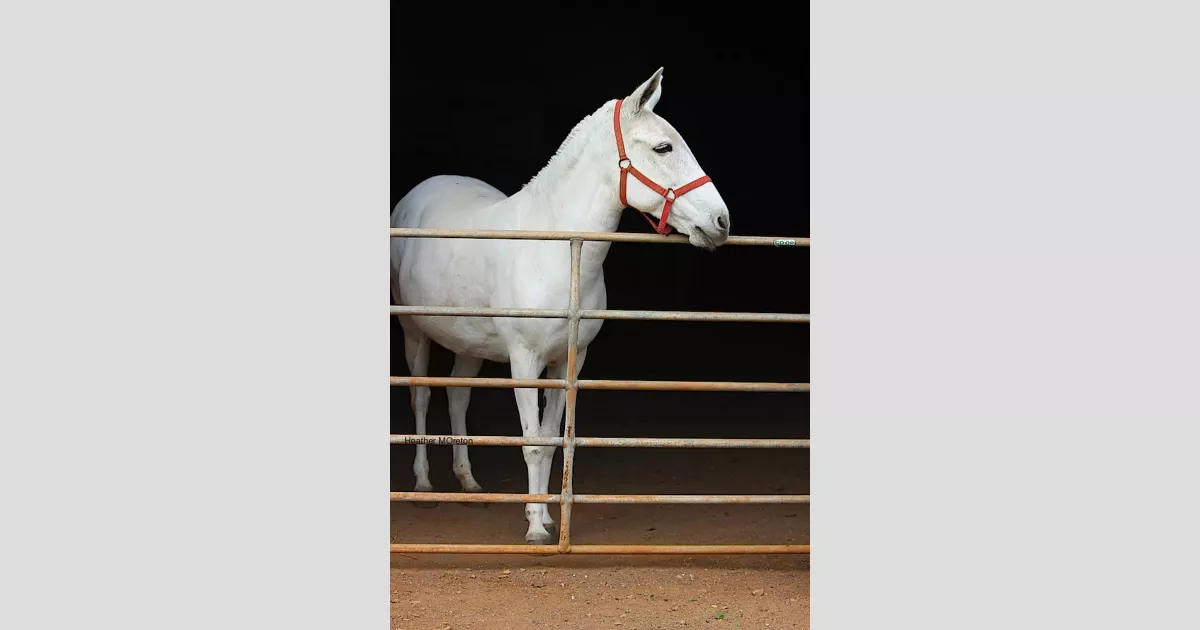The mule is a hybrid animal that results from breeding a male donkey and a female horse. It is more common than the hinny, which is the offspring of a male horse and a female donkey. Mules are robust animals used for various purposes, and their existence highlights the intriguing possibilities of interspecies breeding.
1939: "Old Bec," the Fertile Mare Mule
A 1939 article in the Journal of Heredity documented the case of "Old Bec," a fertile mare mule owned by Texas A&M University. "Old Bec" produced two offspring, one sired by a jack and the other by a Saddlebred stallion. While her female offspring proved sterile, her male offspring exhibited no donkey characteristics and further sired foals with no donkey traits, raising questions about the heritability of hybrid traits.
1995: Brazilian Study on Mare Mule Fertility
In 1995, researchers at the Federal University of Minas Gerais in Brazil reported on a mare mule that had experienced multiple pregnancies, showcasing the potential for repeated fertility in these hybrids. The mule had given birth to offspring sired by both donkeys and horses, with varying chromosome counts and physical characteristics.
2002: Mare Mule Foals in Morocco
In early 2002, a rare event was observed in Morocco: a mare mule giving birth to a foal. This occurrence, considered an ill omen in ancient times, added to the limited but growing documentation of fertile mare mules.
May 2003: Idaho Gem, the First Cloned Mule
In a groundbreaking scientific achievement in May 2003, a mule named Idaho Gem was born at the University of Idaho, marking the first successful cloning of both an equid and a hybrid animal. This significant milestone demonstrated the advancement of cloning technology.
2003: China Leads Global Mule Market
In 2003, the Food and Agriculture Organization of the United Nations identified China as the leading market for mules, followed by Mexico and various Central and South American countries. This data point underscored the ongoing global significance of mules in agriculture and transportation, particularly in developing nations.
2005: Mule Trains in Modern Logistics
Despite advancements in transportation, mule trains remained relevant in logistical operations as late as 2005. Organizations like the World Food Programme utilized these animals for transporting goods in areas with challenging terrain, highlighting the continued practicality of mules in specific contexts.
2007: Colorado Mare Mule Produces Colt
Further evidence of mare mule fertility emerged in 2007 when a mare mule in Colorado gave birth to a colt. Blood and hair analysis confirmed the biological relationship between the mule mother and her foal, adding to the scientific understanding of this unusual phenomenon.
Mentioned in this timeline
Morocco officially the Kingdom of Morocco is a North African...
China officially the People's Republic of China PRC is an...
Colorado a Mountain and Southwestern U S state is the...
Texas the second-largest US state by area and population is...
Mexico officially the United Mexican States is a North American...
Brazil is the largest country in South America ranking fifth...
Trending

The Golden Globe Awards are annual accolades recognizing excellence in film and television both domestic and international Established in the...
7 months ago Indiana Preschool Program Faces Cuts: Vouchers Slashed, Requirements Increase, Fee Implemented For Pre-K.
1 month ago Jay Huff's Rise: From Lakers to NBA Blocks Leader, Pacers' Key Question

2 months ago Ripple Denies IPO Plans, Prioritizes RLUSD Expansion and Strategic Acquisitions Above Wall Street.
3 months ago Mel Brooks faces criticism for Hitler joke and UWEC stages his musical.

10 months ago Pat Kelsey: Naismith Coach of the Year Semifinalist after Louisville's Turnaround; ACC Semifinal Post-Game
Popular

Stranger Things created by the Duffer Brothers is a popular...

XXXTentacion born Jahseh Dwayne Ricardo Onfroy was a controversial yet...

Kelsey Grammer is an accomplished American actor producer and singer...

Candace Owens is an American conservative political commentator and author...

Bernie Sanders is a prominent American politician currently serving as...

Melania Trump a Slovenian-American former model has served as First...
